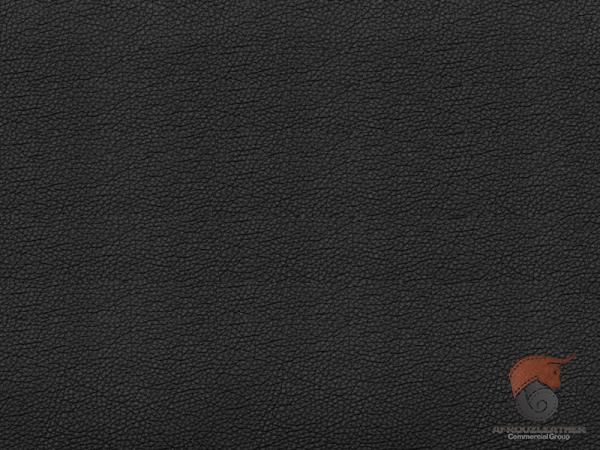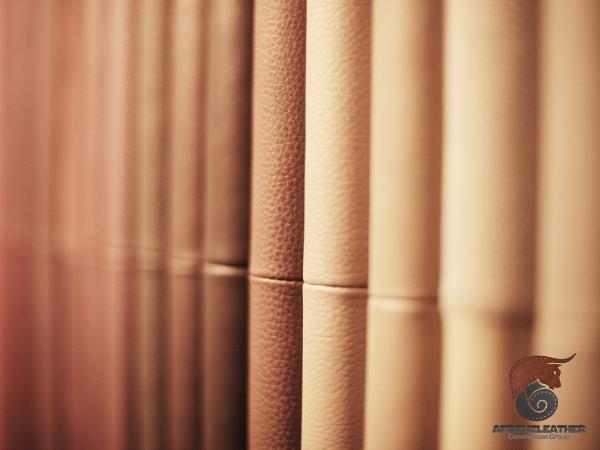Leather has been a popular choice for a variety of products, from footwear and apparel to furniture and accessories, due to its durability, timeless appeal, and natural aesthetics. When it comes to cow leather, there are two commonly discussed variations: cow crust raw leather and real leather. In this article, we will delve into the key differences between these two types of leather, exploring their manufacturing processes, usage, quality, and pricing. Understanding Cow Crust Raw Leather: Cow crust raw leather, also known as semi-finished or unfinished leather, is produced by tanning raw cowhides. Unlike finished leather, it does not undergo the final coloration and surface treatment processes. Typically, the cowhides are soaked in chemicals to remove hair and fat, then treated with a combination of vegetable and chrome tanning agents to achieve a desired level of suppleness and resistance to decay. Usage and Applications: Cow crust raw leather often serves as a semi-finished material that is later utilized in various industries. It is commonly used in the automotive sector for manufacturing car interiors, such as seats and steering wheel covers. Additionally, it finds application in the footwear industry for midsoles, linings, and insoles, as well as in the upholstery sector for furniture, bags, and accessories.
leather
 It is important to note that cow crust raw leather requires further processing, finishing, and customization to become suitable for consumer use. Therefore, it is often sold to leather manufacturers who possess the tools and expertise to transform it into finished leather products. Quality and Durability: The quality and durability of cow crust raw leather can vary greatly based on factors such as the quality of the raw hide, tanning process, and the expertise of the tanners. Without the final finishing processes, cow crust raw leather may lack the desired appearance, smoothness, and softness. Furthermore, it may not exhibit the same level of resistance to water, stains, and other external elements as finished leather. While cleanliness and natural imperfections may be visible in cow crust raw leather, it offers a certain rugged charm that some individuals appreciate. However, due to its unfinished nature, it may require additional treatments and care to maintain its appearance and prolong its lifespan. Cost: One of the key advantages of cow crust raw leather is its cost-effectiveness. It is generally less expensive compared to finished leather since it requires further processing to achieve the desired appearance. The value of cow crust raw leather lies primarily in its potential for customization, allowing leather manufacturers to apply their unique finishes and designs to produce a range of different products. Understanding Real Leather: Real leather, also known as full-grain leather, is the end product of the leather manufacturing process.
It is important to note that cow crust raw leather requires further processing, finishing, and customization to become suitable for consumer use. Therefore, it is often sold to leather manufacturers who possess the tools and expertise to transform it into finished leather products. Quality and Durability: The quality and durability of cow crust raw leather can vary greatly based on factors such as the quality of the raw hide, tanning process, and the expertise of the tanners. Without the final finishing processes, cow crust raw leather may lack the desired appearance, smoothness, and softness. Furthermore, it may not exhibit the same level of resistance to water, stains, and other external elements as finished leather. While cleanliness and natural imperfections may be visible in cow crust raw leather, it offers a certain rugged charm that some individuals appreciate. However, due to its unfinished nature, it may require additional treatments and care to maintain its appearance and prolong its lifespan. Cost: One of the key advantages of cow crust raw leather is its cost-effectiveness. It is generally less expensive compared to finished leather since it requires further processing to achieve the desired appearance. The value of cow crust raw leather lies primarily in its potential for customization, allowing leather manufacturers to apply their unique finishes and designs to produce a range of different products. Understanding Real Leather: Real leather, also known as full-grain leather, is the end product of the leather manufacturing process.
Specifications of leather
 It undergoes several finishing stages to enhance its appearance, texture, and overall quality. The process involves removing imperfections, buffing the surface, and applying dyes, pigments, and sealants to achieve the desired color, shine, and smoothness. Usage and Applications: Real leather is a highly versatile material and finds wide-ranging applications in various industries. It is most commonly used in high-end fashion products such as shoes, handbags, belts, and wallets. It is also extensively utilized in upholstery for furniture, car seats, and luxury interior design projects. Due to its refined finish, real leather offers a luxurious and sophisticated appeal that appeals to consumers seeking premium-grade products. Its durability, natural breathability, and ability to age gracefully further contribute to its desirability. Quality and Durability: Real leather is renowned for its exceptional quality, durability, and longevity. It retains the natural characteristics of the hide, including the grain pattern, scars, and wrinkles, which add to its uniqueness. The finishing processes used during production enhance the leather’s strength, resistance to wear and tear, and ability to withstand exposure to elements such as sunlight and moisture. The refined finish of real leather not only ensures a visually appealing product but also contributes to its longevity. With proper care, real leather products can last for many years, making them a worthy investment.
It undergoes several finishing stages to enhance its appearance, texture, and overall quality. The process involves removing imperfections, buffing the surface, and applying dyes, pigments, and sealants to achieve the desired color, shine, and smoothness. Usage and Applications: Real leather is a highly versatile material and finds wide-ranging applications in various industries. It is most commonly used in high-end fashion products such as shoes, handbags, belts, and wallets. It is also extensively utilized in upholstery for furniture, car seats, and luxury interior design projects. Due to its refined finish, real leather offers a luxurious and sophisticated appeal that appeals to consumers seeking premium-grade products. Its durability, natural breathability, and ability to age gracefully further contribute to its desirability. Quality and Durability: Real leather is renowned for its exceptional quality, durability, and longevity. It retains the natural characteristics of the hide, including the grain pattern, scars, and wrinkles, which add to its uniqueness. The finishing processes used during production enhance the leather’s strength, resistance to wear and tear, and ability to withstand exposure to elements such as sunlight and moisture. The refined finish of real leather not only ensures a visually appealing product but also contributes to its longevity. With proper care, real leather products can last for many years, making them a worthy investment.
buy leather
 Cost: Real leather is typically more expensive than cow crust raw leather due to the additional processing, finishing, and customization carried out during its production. The price variation depends on factors such as the quality of the hide, the expertise of the tanners, and the demand for the finished product. Consumers should be prepared to pay a premium for the luxury and longevity offered by real leather. Conclusion: When comparing cow crust raw leather to real leather, it becomes clear that they serve different purposes and cater to distinct markets. Cow crust raw leather acts as a semi-finished material, offering affordability and customization potential to leather manufacturers. On the other hand, real leather represents the pinnacle of quality, luxury, and durability, making it a sought-after choice among discerning consumers. Both types of leather have their own unique charm and advantages, with cow crust raw leather offering a more rustic and raw aesthetics, while real leather provides refined elegance and timeless appeal. Ultimately, the choice between these two types of leather depends on individual preferences, budget considerations, and the specific requirements of the end product.
Cost: Real leather is typically more expensive than cow crust raw leather due to the additional processing, finishing, and customization carried out during its production. The price variation depends on factors such as the quality of the hide, the expertise of the tanners, and the demand for the finished product. Consumers should be prepared to pay a premium for the luxury and longevity offered by real leather. Conclusion: When comparing cow crust raw leather to real leather, it becomes clear that they serve different purposes and cater to distinct markets. Cow crust raw leather acts as a semi-finished material, offering affordability and customization potential to leather manufacturers. On the other hand, real leather represents the pinnacle of quality, luxury, and durability, making it a sought-after choice among discerning consumers. Both types of leather have their own unique charm and advantages, with cow crust raw leather offering a more rustic and raw aesthetics, while real leather provides refined elegance and timeless appeal. Ultimately, the choice between these two types of leather depends on individual preferences, budget considerations, and the specific requirements of the end product.

Your comment submitted.